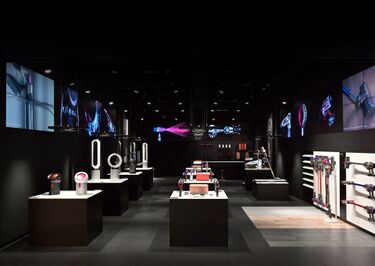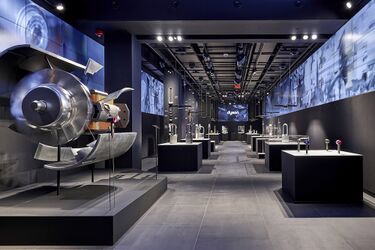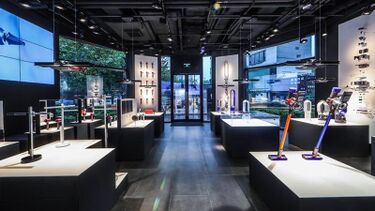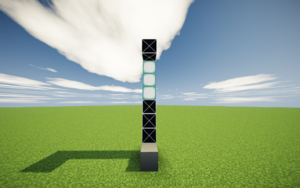User:Metromap.svg/Dyson
DISCLAIMER This company, Dyson, is not affiliated or have any association with the real life Dyson Ltd. (UK Company Registration Number: 02627406). Dyson Ltd. does not in any way endorse, approve or sponsor this company in the MRT server. All rights, trademarks, and copyrights belong solely and registered to Dyson Technology Limited, registered in Tetbury Hill, Malmesbury, Wiltshire SN16 0RP, Great Britain. All uses are strictly of non-commercial nature. |
SPECIAL NOTICE Due to Metromap_svg is in the process of obtaining Councillor rank, expect delays for construction of new Dyson retail stores. We apologise for the inconveniences caused. |
This is a page dedicated to everything technical about Dyson.
Architectural Guide
This guide is written in order to assist cities which wishes to have a Dyson retail space, regardless if its a Demo Store, Demo Zone, or a Pop-up store, to identify suitable spaces to host retail spaces for a Dyson while complementing towards the city's cultural aesthetics.
Demo store
A common Demo store (and my reference for most stores) look like these:

|
||
| A Dyson Demo store | A Dyson Demo store, but in New York | A Dyson Demo store, but in Shanghai |
Note that these stores share the following similarities:
- They have black interiors
- They have huge graphics on the wall, either static or video, showcasing their products
- Most Demo stores are at least 5m tall
In addition, most Dyson Demo stores are nested within malls, building blocks or high streets, and do not occupy a stand-alone building or a purpose-built building such as Apple stores or other franchises within the MRT. Thus, it is recommended by Dyson that cities plan and allocate existing spaces for Dyson, rather than allocating a plot for construction of an entirely new purpose-built retail store. Furthermore, Dyson Demo stores, if they do occupy a street storefront, would retain its facade as much as possible in order to preserve the architectural nature and vibe of the city, unless if explicit permission is granted by the city otherwise.
With this in regard, most Dyson Demo stores will incorporate the features of Demo stores around the globe, notably with the usage of custom graphics via maps.
Keep in mind that it is noted upon that excessive usage of map items within a single region/chunk may affect the performance of one's game on the client-side, but so far it is observed that the impact is not significant, and it is dependant on the size of the store itself. On average, there are as much as ≈0.28 map items used per metre squared.
Size
The size of a Demo store can vary between the number and type of merchandises displayed. Typically, the more merchandises one store has, the more space it will need to take up. In comparison, the largest Demo store in the world, Dyson Demo Paris in Opera, occupies 450m^2 of retail space. However, if the "Minecraft factor" is included, more space will be needed.
One can imagine the placement of merchandises akin to business management games of 2000s, where the user in a typical commercial environment (supermarket, restaurant, etc) would require to manage the spaces one will take up in order to maximise customer satisfaction while efficiently utilising of the spaces aforementioned. To determine how much space you will need, you can run though a rough calculation with this formula by selecting the product that one has chosen the adding them up together:
[Vacuum≈74m^2]+[Purifier≈84m^2]+[Heater≈24m^2]+[Humidifier≈24m^2]+[Cryptomic(all)≈84m^2]+[Hair care≈84m^2]+[lighting≈60m^2]
(Note that Hand Dryers are not displayed in Demo stores (as they are not marketed for the consumer segment), rather they are displayed instead in Dyson Representation Offices. This will be explained later below.)
If one had selected to introduce all product categories in their city, this will amount to at least with the minimum retail floor space of 434m^2. However, this number may be higher in order to accommodate customer flow.
In addition to retail floor space, Dyson will also require additional space for the storage of merchandises and to allocate a break room for employees working within the store. Typically, this space will be at a minimum of 75m^2, but will increase if there are more merchandises on display.
The minimum height for a Dyson Demo store is 6m. However, Dyson Demo stores will require a custom-flooring and ceiling. This then makes the gross minimum height to 8m, including floor and ceiling. This is important if one wishes to build within an existing space or build, as many spaces may not be able to cater to this requirement.
The value of the width of the store must be an even number, as the logo of Dyson on the front of the store is measured 2m*1m in size, it is much more fitting to have an even width instead of an odd width. This may be relaxed for stores on the corner space, where entry point of the store can come from both sides. Thus, while the even number width rule is not a requirement for corner stores, it is recommended in order to maintain consistency as Dyson places ads behind the windows of the store, which are (often) 2m in width.
Demo Zone
The utilisation of Demo Zones is more often seen for situations where space is a constraint, or when the size of the area served is not large enough to warrant for a Demo store. Typically, Demo Zones will have a prime focus on a single product category, such as vacuum, hair care, or purification, but more often they feature hair care products, such as the Supersonic, Airwrap and recently, the Corrale.
The size and dimension of a Demo zone is flexible, and does not conform to the design language of a Demo store, thus it is regarded as the best solution for most growing cities. Most Demo zones can be as big as a store at 250m^2, or as small as a 50m^2. The services and products offered are almost as equal as to a Demo Store, and thus are often listed in Dyson's website.
Pop-up Store
A pop-up store differs from a Demo Zone, where in real-life context, they are utilised in a temporary manner, such as within exhibitions or during sale seasons. These are more commonly found in high-streets or in an area where a large congregation/high traffic is expected within a mall, typically the geographical centre of the complex itself, where the space is usually large enough to feature events or product exhibitions.
These pop-up store can function more or less like a Demo Zone, except their services, product selection and display are limited due to capacity and size. However, pop-up stores are most effective when cost and space constraint is an issue, or during exhibitions and seasonal events.


